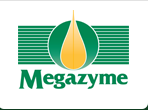TheL-Arginine/Urea/AmmoniatestkitisspecificandarapidmeasurementandanalysisofL-arginine,ureaandammoniaingrapejuice/mustandwine.
Grapeandwineanalysis:Oenologiststoexploitadvancedtestkits.
Charnock,S.C.&McCleary,B.V.(2005).RevuedesEnology,117,1-5.
LinktoArticle
ReadAbstract
Itiswithoutdoubtthattestingplaysapivotalrolethroughoutthewholeofthevinificationprocess.Toproducethebestposs
IBLequalitywineandtominimiseprocessproblemssuchas“stuck”fermentationortroublesomeinfections,itisnowrecognisedthatifpossibletestingshouldbeginpriortoharvestingofthegrapesandcontinuethroughtobottling.Tr
ADItionalmethodsofwineanalysisareoftenexpensive,timeconsuming,requireeitherelaborateequipmentorspecialistexpertiseandfrequentlylackaccuracy.However,enzymaticbio-analysisenablestheaccuratemeasurementofthevastmajorityofanalytesofinteresttothewinemaker,usingjustonepieceofapparatus,thespectrophotometer(
seepreviousissueNo.116foradetailedtechnicalreview).Grapejuiceandwineareamenabletoenzymatictestingasbeingliquidstheyarehomogenous,easytomanipulate,andcangenerallybeanalysedwithoutanysamplepreparation.
Megazyme“advanced”winetestkitsgeneralcharacteristicsandvalidation.
Charnock,S.J.,McCleary,B.V.,Daverede,C.&Gallant,P.(2006).ReveuedesOenologues,120,1-5.
LinktoArticle
ReadAbstract
ManyoftheenzymatictestkitsareofficialmethodsofprestigiousorganisationssuchastheAssociationofOfficialAnalyticalChemicals(AOAC)andtheAmericanAssociationofCerealChemists(AACC)inresponsetotheinterestfromoenologists.Megazymedecidedtouseitslonghistoryofenzymaticbio-analysistomakeasignificantcontributiontothewineindustry,bythedevelopmentofarangeofadvancedenzymatictestkits.Thistaskhasnowbeensuccessfullycompletedthroughthestrategicandcomprehensiveprocessofidentifyinglimitationsofexistingenzymaticbio-analysistestkitswheretheyoccurred,andthenusingadvancedtechniques,suchasmolecular
BIOLOGy(
photo1),torapidlyovercomethem.Noveltestkitshavealsobeendevelopedforanalytesofemerginginteresttotheoenologist,suchasyeastavailablenitrogen(
YAN;seepages2-3ofissue117article),orwherepreviouslyenzymesweresimplyeithernotavailable,orweretooexpensivetoemploy,suchasforD-mannitolanalysis.
Regulatoryroleofnitricoxideinthereducedsurvivaloferythrocytesinvisceralleishmaniasis.
Chowdhury,K.D.,Sen,G.&Biswas,T.(2010).BiochimicaetBiophysicaActa(BBA)-GeneralSubjects,1800(9),964-976.
LinktoArticle
ReadAbstract
Background:Nitricoxide(NO)playsavitalroleinmaintainingthesurvivabilityofcirculatingerythrocytes.HerewehaveinvestigatedwhetherNOdepletionassociatedwithvisceralleishmaniasis(VL)isresponsibleforthereducedsurvivaloferythrocytesobservedduringthedisease.
Methods:Infectedhamstersweretreatedwithstandardanti-leishmanialsodiumstibogluconate(SAG)andNOdonorisosorbidedinitrate(ISD).ErythrophagocytosisbymacrophageswasdeterminedbylabellingthecellswithFITCfollowedbyflowcytometry.Aggregationofband3wasestimatedfromband3associatedEMAfluorescence.Caspase3activitywasmeasuredusingimmunosorbentassaykit.Phosphatidylserine(PS)externalizationandcellshrinkageweredeterminedusingannexinV.AminophspholipidtranslocaseandscramblaseactivitiesweremeasuredfollowingN
BD-PSandNBD-PCinternalization,respectively.
Results:ImpairmentofbothsynthesisanduptakeofNOresultedindecreasedbioavailabilityofthissignalingmoleculeinerythrocytesinVL.NOlevelwasreplenishedaftersimultaneoustreatmentwithISDandSAG.Combinationtreatmentdecreasedredcellapoptosisininfectedanimalsbydeactivatingcaspase3throughs-nitrosylation.Drugtreatmentpreventedinfection-mediatedATPdepletionandalteredcalciumhomeostasisinerythrocytes.Improvedmetabolicenvironmenteffectivelyamendeddysregulationofaminophospholipidtranslocaseandscramblase,whichinturnreducedcellshrinkage,andexposureofphosphatidylserineonthecellsurfaceunderthediseasedcondition.
Conclusionandgeneralsignificance:Inthisstudy,wehaveidentifiedNOdepletiontobeanimportantfactorinpromotingprematurehemolysiswiththeprogressofleishmanialinfection.ThestudyimplicatesNOtobeapossibletargetforfuturedrugdevelopmenttowardsthepromotionoferythrocytesurvivalinVL.
Changesinthevolatilecompoundproductionoffermentationsmadefrommustswithincreasinggrapecontent.
Keyzers,R.A.&Boss,P.K.(2010).JournalofAgriculturalandFoodChemistry,58(2),1153-1164.
LinktoArticle
ReadAbstract
Wineisacomplexconsumerproductproducedpredominatelybytheactionofyeastupongrapejuice.Modelmustsystemshaveproventobeidealforstudiesintotheeffectsoffermentationconditionsontheproductionofcertainwinevolatiles.Toclarifythecontributionofgrapejuicetotheproductionofwinevolatiles,wehaveemployedamodelmustsystemspikedwithincreasingamountsofgrapejuice(RieslingorCabernetSauvignon).TheresultingfermentedwineswereanalyzedbySPME-GC-MSandthedataobtainedgroupedusingANOVAandclusteranalysestorevealthosecompoundsthatvariedinconcentrationwithreproducibletrendsrelativetojuiceconcentration.Suchgroupinghighlightsthosecompoundsthataregrape-dependentorforwhichproductionismodulatedbygrapecomposition.Insomecases,increasingtheproportionofgrapejuiceinthefermentationsstimulatedtheproductionofcertainesterstolevelsbetween2-and140-foldhigherthanthoseseeninfermentationsmadewithmodelgrapejuicemediaalone.Theidentificationofthegrapecomponentsresponsiblefortheincreasedproductionofthesewinevolatileswillhaveimplicationsfortheimpactofgrapeproductionandenologyonwineflavorandaroma.
Thedeterminationofureainwine–areview.
Francis,P.S.(2006).AustralianJournalofGrapeandWineResearch,12(2),97-106.
LinktoArticle
ReadAbstract
TheconcentrationofureainwineisnotroutinelymeasuredinAustralianlaboratories,buthasbeenexaminedinstudiesofyeastmetabolismandtheformationofethylcarbamate,aknowncarcinogen.Foralcoholicbeveragesthatmaycontainhighlevelsofurea,stepshavebeentakentoreducetheconcentrationofureaandthereforepreventethylcarbamateproduction.Methodsforthedeterminationofureainwinecanbegroupedintothreecategoriesthatindicatehowselectivityforureaisachieved;thosebasedoncolour-formingreactions,enzymatichydrolysisandchromatographicseparation.Thetwodominantmethodsusedbyresearchgroupsoverthepastfifteenyearsforthedeterminationofureainwinearebasedontheurea/ammoniatestkitavailablefromBoeringerMannheim/R-Biopharmandthereactionofureawith1-phenyl-1,2-propanedione-2-oxime;botharetime-consumingandlabour-intensive,butinvolverelativelystraightforwardandwell-establishedprocedures.However,otheroptionsareavailablethatmaybebettersuitedtothedesiredapplicationandtheinstrumentationavailableinanyparticularlaboratory.
Grapecontributiontowinearoma:productionofhexylacetate,octylacetate,andbenzylacetateduringyeastfermentationisdependentuponprecursorsinthemust.
Dennis,E.G.,Keyzers,R.A.,Kalua,C.M.,Maffei,S.M.,Nicholson,E.L.&Boss,P.K.(2012).JournalofAgriculturalandFoodChemistry,60(10),2638-2646.
LinktoArticle
ReadAbstract
Wineisacomplexconsumerproductproducedpredominatelybytheactionofyeastupongrapejuicemusts.Modelmustsystemshaveprovenidealforstudiesoftheeffectsoffermentationconditionsontheproductionofcertainwinevolatiles.Toidentifygrape-derivedprecursorstoacetateesters,modelfermentationsystemsweredevelopedbyspikingprecursorsintomodelmustatdifferentconcentrations.Solid-phasemicroextraction–gaschromatgraphymassspectrometryanalysisofthefermentedwinesshowedthatavarietyofgrape-derivedaliphaticalcoholsandaldehydesareprecursorstoacetateesters.TheC6compoundshexan-1-ol,hexenal,(E)-2-hexen-1-ol,and(E)-2-hexenalareallprecursorstohexylacetate,andoctanolandbenzylalcoholareprecursorstooctylacetateandbenzylacetate,respectively.Inthesecases,thepostfermentationconcentrationofanacetateesterincreasedproportionallywiththeprefermentationconcentrationoftherespectiveprecursorinthemodelmust.Determiningviticulturalorwinemakingmethodstoaltertheprefermentationconcentrationofprecursorcompoundsorchangetheprecursor-to-acetateesterratiowillhaveimplicationsuponthefinalflavorandaromaofwines.
StabilizedandImmobilizedBacillussubtilisArginasefortheBiobasedProductionofNitrogen‐ContainingChemicals.
Könst,P.M.,Turras,P.M.C.C.D.,Franssen,M.C.R.,Scott,E.L.&Sanders,J.P.M.(2010).AdvancedSynthesis&Catalysis,352(9),1493-1502.
LinktoArticle
ReadAbstract
L-Ornithinecouldserveasanintermediateinthebiobasedproductionof1,4-diaminobutanefromL-arginine.Usingtheconceptofbiorefinery,L-argininecouldbecomewidelyavailablefrombiomasswastestreams
viathenitrogenstoragepolypeptidecyanophycin.SelectivehydrolysisofL-argininetoL-ornithineisdifficulttoperformchemically,thereforethestabilizationandimmobilizationof
Bacillussubtilisarginase(EC3.5.3.1)wasstudiedinacontinuouslystirredmembranereactorsystem.InitialpHofthesubstratesolution,additionofL-asparticacidandreducingagentsallappearedtohaveaneffectontheoperationalstabilityof
B.subtilisarginase.Aremarkablygoodoperationalstability(totalturnovernumber,TTN=1.13.10
8)atthepHofargininefreebase(pH11.0)wasobserved,whichwasfurtherimprovedwiththeadditionofsodiumdithionitetothesubstratesolution(TTN>1.10
9).
B.subtilisarginasewassuccessfullyimmobilizedonthreecommerciallyavailableepoxy-activatedsupports.ImmobilizationonSepabeadsEC-EPwasmostpromising,resultinginarecoveredactivityof75%andenhanced
Thermostability.Inconclusion,thestabilizationandimmobilizationof
B.subtilisarginasehasopeneduppossibilitiesforitsapplicationinthebiobasedproductionofnitrogen-containingchemicalsasanalternativetothepet
Rochemicalproduction.
Genome-widefitnessprofilesrevealarequirementforautophagyduringyeastfermentation.
Piggott,N.,Cook,M.A.,Tyers,M.&Measday,V.(2011).G3:Genes,Genomes,Genetics,1(5),353-367.
LinktoArticle
ReadAbstract
Theabilityofcellstorespondtoenvironmentalchangesandadapttheirmetabolismenablescellsurvivalunderstressfulconditions.ThebuddingyeastSaccharomycescerevisiae(S.cerevisiae)isparticularlywelladaptedtotheharshconditionsofanaerobicwinefermentation.However,S.cerevisiaegenefunctionhasnotbeenpreviouslysystematicallyinterrogatedunderconditionsofindustrialfermentation.Weperformedagenome-widestudyofessentialandnonessentialS.cerevisiaegenerequirementsduringgrapejuicefermentationtoidentifydeletionstrainsthatareeitherdepletedorenrichedwithintheviablefermentativepopulation.Genesthatfunctioninautophagyandubiquitin-proteasomedegradationarerequiredforoptimalsurvivalduringfermentation,whereasgenesthatfunctioninribosomeassemblyandperoxisomebiogenesisimpairfitnessduringfermentation.Wealsouncoverfermentationphenotypesfor139uncharacterizedgeneswithnopreviouslyknowncellularfunction.Wedemonstratethatautophagyisinducedearlyinwinefermentationinanitrogen-repleteenvironment,suggestingthatautophagymaybetriggeredbyotherformsofstressthatariseduringfermentation.Theseresultsprovideinsightsintothecomplexfermentationprocessandsuggestpossiblemeansforimprovementofindustrialfermentationstrains.
Sauvignonblancmetabolomics:grapejuicemetabolitesaffectingthedevelopmentofvarietalthiolsandotheraromacompoundsinwines.
Pinu,F.R.,Edwards,P.J.B.,Jouanneau,S.,Kilmartin,P.A.,Gardner,R.C.&Villas-Boas,S.G.(2014).Metabolomics,10(4),556-573.
LinktoArticle
ReadAbstract
Thepathwayforthebiogenesisofvarietalthiols,suchas3-mercaptohexanol(3MH),3-mercaptohexylacetate(3MHA)and4-mercapto-4-methylpentan-2-one(4MMP)inSauvignonblanc(SB)winesisstillanopenquestion.Varietalthioldevelopmentrequiresyeastactivity,butpoorcorrelationhasbeenfoundbetweenthiolsandtheirputativerespectiveprecursors.Thisresearchisthefirstapplicationofmetabolomicstounravelmetabolitesinthegrapejuicethataffecttheproductionofvarietalthiolsinwines.Comprehensivemetaboliteprofilingof63commerciallyharvestedSBjuiceswereperformedbycombininggaschromatography–massspectrometryandnuclearmagneticresonancespectroscopy.Thesejuiceswerefermentedundercontrolledlaboratoryconditionsusingacommercialyeaststrain(EC1118)at15°C.Correlationofthiolconcentrationinthewineswithinitialmetaboliteprofilesidentified24metabolitesthatshowedpositivecorrelation(R>0.3)withboth3MHand3MHA,whileonlyglutaminehadpositivecorrelationwith4MMP.Subsequently,wecarriedoutjuicemanipulationexperimentsbyaddingsubsetsofthese24metabolitesina2011SBgrapejuiceinordertovalidatethehypothesesgeneratedbymetabolomics.ThejuicemanipulationresultsconfirmedmetabolomicshypothesesandrevealedgrapejuicemetabolitesthatsignificantlyimpactonthedevelopmentofthreemajorvarietalthiolsandotheraromacompoundsofSBwines.
Biguaniderelatedcompoundsintraditionalantidiabeticfunctionalfoods.
Perla,V.&Jayanty,S.S.(2013).FoodChemistry,138(2-3),1574-1580.
LinktoArticle
ReadAbstract
Biguanidessuchasmetforminarewidelyusedworldwideforthetreatmentoftype-2diabetes.TheidentificationofguanidineandrelatedcompoundsinFrenchlilacplant(GalegaofficinalisL.)ledtothedevelopmentofbiguanides.Despiteoftheirplantorigin,biguanideshavenotbeenreportedinplants.Theobjectiveofthisstudywastoquantifybiguaniderelatedcompounds(BRCs)inexperimentallyorclinicallysubstantiatedantidiabeticfunctionalplantfoodsandpotatoes.ThecorrectedresultsoftheVoges–Proskauer(V–P)assaysuggestthatthehighestamountsofBRCsarepresentingreencurryleaves(Murrayakoenigii(L.)Sprengel)followedbyfenugreekseeds(Trigonellafoenum-graecumL.),greenbittergourd(MomordicacharantiaDescourt.),andpotato(SolanumtuberosumL.).Whereas,garlic(AlliumsativumL.),andsweetpotato(Ipomeabatatas(L.)Lam.)containnegligibleamountsofBRCs.Inaddition,thepossiblebiosyntheticroutesofbiguanideintheseplantfoodsarediscussed.
InvitroremovalofochratoxinAbytwostrainsofSaccharomycescerevisiaeandtheirperformancesunderfermentativeandstressingconditions.
Petruzzi,L.,Bevilacqua,A.,Baiano,A.,Beneduce,L.,Corbo,M.R.&Sinigaglia,M.(2014).JournalofAppliedMicrobiology,116(1),60-70.
LinktoArticle
ReadAbstract
Aims:Theaimofthisresearchwastostudytheeffectoftime,temperature,sugarcontentandadditionofdiammoniumphosphate(DAP)onochratoxinA(OTA)removalbytwostrainsofSaccharomycescerevisiaeusingacompletelyrandomizeddesign.MethodsandResults:ThestrainsweregrowninamediumcontainingOTA(2μgl-1),twosugarlevels(200and250gl-1),withorwithoutDAP(300mgl-1),andincubatedat25–30°C.Theyeastswereabletodecreasethetoxinamountbyc.70%,withthehighestremovingeffectobservedafter3daysat30°Cinthepresenceof250gl-1ofsugarsandwithDAP;after10days,thetoxinwaspartiallyreleasedintothemedium.Thestrainsproducedhighethanolandglycerolcontents,showedhightolerancetosingle/combinedstressconditionsandpossessedβ-D-glucosidase,pectinaseandxylanaseactivities.OchratoxinAremovalwasaffectedbytime,temperature,sugarandadditionofDAP.Moreover,thephenomenonwasreversible.Conclusions:OchratoxinAremovalwasaffectedbytime,temperature,sugarandadditionofDAP.Moreover,thephenomenonwasreversible.SignificanceandImpactoftheStudy:OchratoxinAremovalcouldbeaninterestingtraitfortheselectionofpromisingstrains;however,thestrainsremovingefficientlythetoxincouldreleaseitback;thus,theselectionofthestartershouldtakeintoaccountboththeremovalandthebindingabilityofOTA.
ViableandculturablepopulationsofSaccharomycescerevisiae,HanseniasporauvarumandStarmerellabacillaris(synonymCandidazemplinina)duringBarberamustfermentation.
Wang,C.,Esteve-Zarzoso,B.,Cocolin,L.,Mas,A.&Rantsiou,K.(2015).FoodResearchInternational,78,195-200.
LinktoArticle
ReadAbstract
Thepresentstudyanalyzedtheviableand/orculturablepopulationsofSaccharomycescerevisiae,HanseniasporauvarumandStarmerellabacillaris(synonymCandidazemplinina)duringlaboratorygrapemustfermentation,inordertoinvestigatetheinteractionbetweenthethreespeciesconsidered.Firstly,populationdynamicsduringwinefermentationwerefollowedbyculture-dependenttechniques,andnon-Saccharomycesyeastbecamenon-culturableatlatestagesoffermentationwhenS.cerevisiaedominated.Fourdifferentculture-independenttechniqueswerefurtherappliedtodetectviableyeastcellsatthelatestageoffermentation.BothquantitativePCRtechniquesapplied,namelyethidiummonoazidebromide(EMA)-qPCRandReverseTranscription(RT)-qPCR,detectedH.uvarumandStarm.bacillarisataconcentrationof105to106cells/mL.Thesenon-culturablecellshadmembranesimpermeabletoEMAandstablerRNA.ThebackgroundsignalsfromdeadcellsdidnotinterferewiththequantificationofviablecellsinwinesamplesbyEMA-qPCRtechnique.Asaqualitativeculture-independenttechnique,DGGEtechniquewascoupledwithEMAtreatment(EMA-PCR-DGGE)orwithRT(RT-PCR-DGGE).WithEMA-PCR-DGGEnon-SaccharomycesspeciesduringfermentationweredetectedalthoughitwaslimitedbythepredominanceofS.cerevisiae.
KineticcharacterizationofarginasefromSaccharomycescerevisiaeduringalcoholicfermentationatdifferenttemperatures.
Benucci,I.,Fiorelli,V.,Lombardelli,C.,Liburdi,K.&Esti,M.(2017).LWT-FoodScienceandTechnology,82,268-273.
LinktoArticle
ReadAbstract
ThekineticcharacterizationofarginaseactivityofacommercialS. cerevisiaestrainwascarriedoutforthefirsttime,estimatingthekineticparameters(Vmax,K0.5andVmax/K0.5)throughoutalcoholicfermentationinordertoinvestigatethecatalyticefficiencyoftheenzymeanditsabilityinmetabolizingargininetosustainbiosyntheticprocesses.Alcoholicfermentationwascarriedoutatthreedifferenttemperatures(15,20,25°C)insemi-syntheticgrapejuiceaddedwitharginineatusualmaximalconcentration(1 g L-1)ingrapemust.Arginineuptakewasquiteconstantthroughoutfermentationprocessanditwasmoreeffectivelyassimilatedduringhightemperaturefermentation(20and25°C)thanat15°C.Thesigmoidalbehaviorofyeastarginasekineticcurves,wellfittedtotheHillequation,indicatedamechanismofpositivecooperativityforthetrimericenzyme.ThehighestVmax(4740.0Umg-1BSAeq)andthemaximalcatalyticefficiency(78.87min-1)wereobservedwhenfermentationwasat20°Capproximately3daysaftertheinoculum.Moreover,theK0.5valuewassimilar(53–60 mg mL-1)whenmaximalcatalyticefficiencywasachieved,thusindicatingthattheaffinityofenzymeforthesubstrateisnotalteredbyfermentationtemperaturewhichonlyaffectedproductreleasevelocityandthereforeVmax/K0.5ratio.




